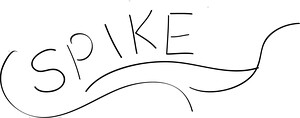Issue 56 “Culture Wars” out now
The culture wars are raging. Neoliberalism and right-wing populism have co-opted the critique of the 1960s and turned it against art, science and the democratic public sphere, while the left is consumed by infighting. This issue is about the return to battle, strategies of (dis-)engagement, and the question of what art is capable of in the aftermath of the great weirding.
Highlights include:
Essay
Love Removal Machines by Rob Horning
The artistic critique of capitalism wanted to liberate us from the chains of conformity, but at the same time the social security net was being dismantled. Then neoliberalism turned this hard-won freedom into a duty and everybody became an artist. If, in 1968, breaking with the family was a prerequisite to living as one wished, 50 years later it is back with redoubled force. Full text
Communal Fantasy by Alison Gingeras & Jamieson Webster
Can you separate an artist and their work? What if their life is itself an artwork? In the early 1970s Otto Muehl—previously known as one of the Vienna Actionists—founded a commune that defied social norms; he declared it a revolutionary artwork. On a failed experiment and what it can tell us about our own time.
Operate in the Dark
The Berlin-based artist Sandra Mujinga plays with economies of visibility and disappearance: performances that take place in darkness, abstracted voices, multiplied bodies, clothing elongated to inhuman dimensions. If everything is surveilled, the biggest potential lies in not being seen. A portrait by Jeppe Ugelvig
To The Other Side
Marianna Simnett pushes her body to the limit—hyperventilating until she faints or injecting Botox into her vocal cords. Her films are about the complexities of gender, contamination, robot cockroaches, cosmetic manipulation, sworn virgins, and Freudian experiments. The London-based artist in conversation with Ella Plevin
The Great Weirding by Dean Kissick
The past few years have seen the rise of a generation of young rappers who are as surreal as the time from which they have emerged. Figures such as 6ix9ine, Lil Pump and XXXTENTACION are like collective hallucinations: they might be amazing or they might be terrible, but all of them are weird.
Outrage Inactivism by Ella Plevin
Anywhere which permits thought of any kind will remain a dangerous terrain for snowflakes on all sides. Yet the free market of ideas is particularly insidious in that it veils our own ability to choose whether or not to conchie the hell out of the information wars at all. Full text
Whoever Controls Culture Controls Politics
In spite of data mining, troll factories, and information warfare, art and culture have once again become a site of conflict. Where do we stand in Europe today, as it drifts further and further to the right? We asked cultural figures from four countries about the influence of the political right on the arts.
With Eva Blimlinger, dean of the Academy of Fine Arts Vienna; Schorsch Kamerun, singer of Die Goldenen Zitronen, and co-organiser of the Golden Pudel Club in Hamburg; Karol Radziszewski, artist and activist based in Warsaw; and journalist Gergely Nagy from Hungary. Full text
Exhibition History
Please Love Austria! First Austrian Coalition Week. A performance by Christoph Schlingensief
Spike spoke to Matthias Lilienthal and Anselm Franke about taking the right at their word and what Schlingensief might do today.
Questions
answered by Aria Dean, Yewande Omotoso, and Asad Raza
Artists’ Favourites
Ramin Haerizadeh, Rokni Haerizadeh & Hesam Rahmanian on Joan Snyder, Karen Karnes, Dubsmash, James “Son Ford” Thomas, Jean Rustin, and Roberts Watts
And
Curator Ekaterina Degot on the mix of abstraction and figuration in a work by Władysław Strzemiński; Elvia Wilk on Gins and Arakawa’s architecture and the desire for immortality; Róza El-Hassan on political posters in Hungary and more…
The Views include Jan Verwoert on “Jokes Seth Can’t Tell” in the NBC show Late Night with Seth Meyers; Liam Gillick at the New Order show at the Vienna International Festival; Louise Bourgeois at Schinkel Pavillon in Berlin; Joan Jonas at Tate Modern in London; Gauri Gill and Julia Phillips at MoMA PS1 in New York, Hugo Montoya at Parque Galéria in Mexico City, Chiara Vigo at Para Site in Hong Kong, and more.
See the full table of contents and buy the issue here.
We also have a brand-new edition by Heimo Zobernig, a limited-edition C-print that brings back an image originally used for a foldout poster in the first-ever issue of Spike; it inaugurates a new series of editions from artists who have been affiliated with Spike over its fourteen-year history. For more details or to place an order click here.
The next issue of Spike will be out on September 26.


